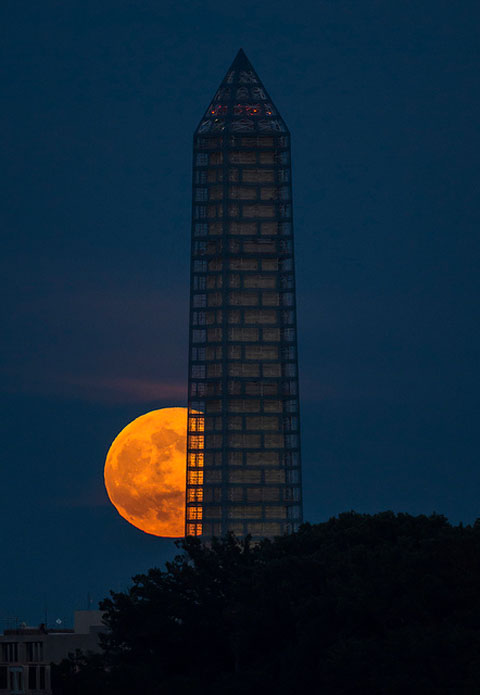Supermoon in Washington, DC
June 24, 2013
Earth revolves around the sun in an elliptical orbit, meaning the distance between the Earth and the sun varies throughout the year.
Similarly, the moon has an elliptical orbit as it revolves around the Earth. On June 23, 2013, the moon reached its perigee — the closest distance to the Earth — during a full moon. This made the moon appear up to 14 percent brighter and 30 percent larger than typical full moons, according to NASA.
Full moons appear due to the relative angles between the sun, Earth, and Moon system. When the moon rests between the Earth and the sun, none of the lit side of the moon can be seen on Earth. When the Earth sits between the sun and the Moon, however, observers will see a full moon in which one entire side of the moon (half of it) reflects light from the sun to Earth-based observers.
Supermoons occur when the moon is full and has reached its closest distance to Earth, leading to fantastic images like the one seen above.















